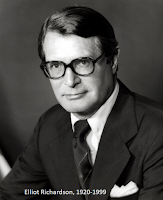The Richmond Fed has released the latest reading of its Hornstein-Kudlyak-Lange Non-Employment Index (NEI). At 7.93 percent, the NEI has now fallen below its pre-recession minimum of 7.99 percent, reached in March, 2007, and it is fast approaching the value of 7.70 percent reached in October 2000, just before the 2001 recession. Data for the NEI are not available before 1994.
The NEI gives important insight into the question of whether or not the U.S. economy is now approaching, or has passed, its potential level of GDP. The standard unemployment rate (U-3) is often criticized as misleading because it does not count people who are out of the labor force. Experience suggests that such people represent a “hidden” labor reserve, since some of them can be drawn back to the labor force when the job market tightens.
The NEI deals with this problem in two ways:
- It counts not only the unemployed, but also those out of the labor force. The latter is a diverse group that includes individuals who want a job (such as the marginally attached who are willing and able to work and sought employment in the past, but have stopped searching) and those who do not want a job (such as retirees, the disabled, students, and those who are neither retired, nor disabled, nor in school).
- It weights the different groups of non-employed (that is, both the unemployed and people out of the labor force) according to their labor market attachment, or the likelihood that a non-employed person will transition back into the job market. Specifically, each group is weighted by its historical transition rate to employment relative to the highest transition rate among all groups (the transition rate of the short-term unemployed).
Reposted from NiskanenCenter.com







